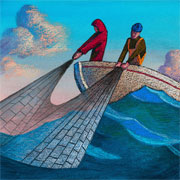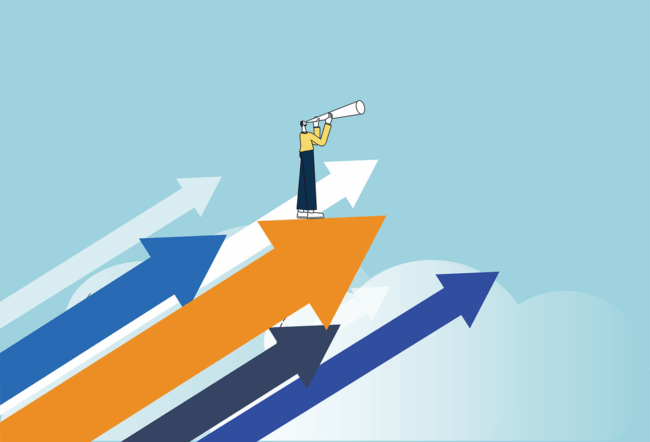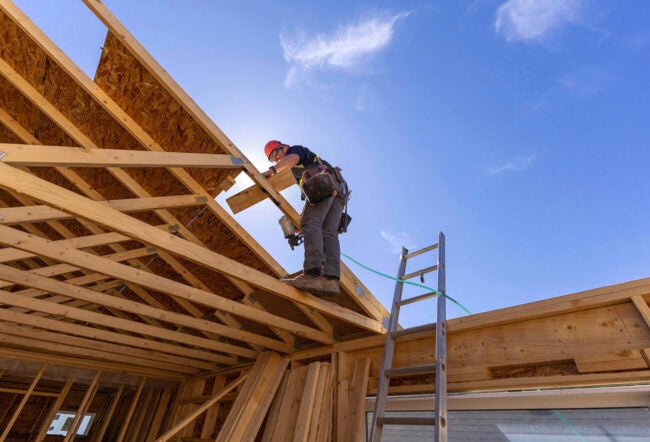By the year 2012, 540,000 low-income Argentines will have received micro-loans worth a total of $230 million. This slow, but effective, growth process first began to gain importance during the economic and social crisis of 2001. Nevertheless, in comparison with the rest of the region, Argentina is behind in terms of providing micro-loans, which aim to improve the quality of life of people who have limited resources.
“In April 2001, María José began her plan to produce bread in her house. Today, she, her husband — previously unemployed — and their daughter are jointly building a bakery.” This is one of numerous success stories in Project Women 2000, aimed at women and homemakers. There are thousands of cases in which businesses dreams became a reality thanks to the system of micro-loans. Its goal is to provide loans to people and families who are outside the banking system because of their economic and social condition.
In Argentina, micro-loans began to gain importance during the grave economic crisis of 2001. However, this is an area where Argentina lags behind other countries when it comes to professionalism and penetration. According to the Andares Foundation, which does research and provides support for micro-loans, some $7 million in micro-loans were authorized in 2005 to 15,000 people. By the end of 2006, 100 micro-loan institutions were operating in Argentina, delivering some $13 million in loans to 30,000 people.
“The development of micro-loans in Argentina is still at an early stage if we compare it with Asia and other countries in Latin America,” says Marta Bekerman, a professor at the University of Buenos Aires. Bekerman is also the president of a non-governmental organization (NGO) known as Avanzar [To Advance], which focuses on working in those sectors that are excluded from the mainstream economy. “Argentina and Brazil, which are the largest countries in the region, are the countries that are least advanced in this sense,” she says. “Meanwhile, Bolivia has grown a great deal because of Banco Sol, and the same thing has happened in Mexico and Colombia.”
Up until 2005, Bolivia’s Banco Sol [Sun Bank] had an active portfolio of 60,000 customers. A Bolivian civil association known as Crecer [To Grow] offered financial services to 37,000 women in more than 1,000 communities. In Asia, Grameen Bank, based in Bangladesh, was created by Nobel Prize winner Muhammad Yunus, known as the “poor people’s banker.” Grameen now has more than 1,092 outlets in more than 40,000 rural villages.
The strongest engines for micro-loans are banks, NGOs and governments. However, in Argentina, the NGOs have been the most advanced. “The system is moving ahead slowly because there is no public policy. There are some civil organizations that have trouble getting financing, as well as banking institutions that face the challenge of not reaching people who are in the ‘informal economy,’” notes Beatriz Berasategui, coordinator of the Sacred Family Foundations, which distributes funding for home repairs to low-income people.
As for the government, Bekerman says that it does not believe that it “must act in a direct way to provide micro-loans because its research indicates that these institutions don’t operate well; they only train some groups of very skilled people. But in any case, the best thing would be if the government worked with NGOs and strengthened them so that they would be more transparent and efficient. Regarding the banks, I believe they play another role, which is a commercial one. There is always a problem because they need to consider profitability.”
Who are the people who need this type of economic assistance? “In Argentina, a segment of the population has lost their jobs and has started various kinds of undertakings,” explains Robinzon Piñeros, an advisor with the FortaleSer Project. That initiative was created in Vicente Lopez, a neighborhood in Buenos Aires, in order to help local families in the area. FortaleSer brings together the PepsiCo Foundation and the Asociación Conciencia (Conscience Association). On the other hand, he adds, “A large number of women who head their families and households want to take care of their children at the same time that they are making or selling some sort of product. In both cases, this initiative is a way to contribute income to a family that has been hurt by unemployment, inflation and other local factors.”
Conscience and the PepsiCo Foundation
According to the Andares Foundation, more than a billion people in the world survive on an income of less than two dollars a day. Of those, more than 150 million live in Latin America. In Argentina, one out of every three people is considered “poor” despite the country’s strong economic growth over the last four years.
In this context, about 100 institutions have popped up, all of which are dedicated to micro-loans. One of them is the Project Women 2000, which started at the Argentina Catholic University. Its goal is to adopt the approach of Bengali Muhammad Yunus to the local realities of Argentina. The initiative now has the support of the Civil Dignity Association, an NGO. It is managed by women and homemakers who continue to raise their own children. “Currently, we have a total of 185 active beneficiaries distributed in three neighborhoods of Gral, Pacheco, in the province of Buenos Aires,” notes Gastón Mascías, chief coordinator of Women 2000. The initiative involves “women between the ages of 18 and 75 who engage in a wide range of business tasks and services: buying and selling clothing, making textiles, working as a seamstress or artisan; washing cars, kiosks, stores, and so forth.”
The Sacred Family Foundation is also active in the Buenos Aires metropolitan area, where there are some of the poorest neighborhoods in Argentina. In its case, the funding is used for home repairs. “Over the last 10 years, 1800 families have benefited from our micro-loans of between $160 and $318 each to make sanitary improvements, build roofs and room dividers, and even build housing for those families who have their own land. These families have both formal and informal jobs; their families are large and they have a low level of education, and no access to formal credit,” notes Beatriz Berasategui.
Bekerman, who runs the NGO known as Avanzar, says that “We are working with loans of between $130 and $635 in areas of the federal capital where income levels are a lot different from elsewhere, especially in southern neighborhoods such as Villa Soldati. We see that the principal poverty belts can have access to the help of NGOs, especially in Buenos Aires province and in the slums of the capital itself. The same thing happens in poor provinces such as Formosa in the north of the country; it happens in every area where there is poverty.”
NGOs also require beneficiaries to take part in “responsibility groups” that comprise several families or women in the neighborhood; NGOs don’t ask loan applicants for formal loan guarantees and salary receipts. “These groups build confidence among various businesspeople because their solidarity groups bring people together. The process gives us a guarantee that their colleagues can generate chains of solidarity in case they are unable to repay their share or portion of the micro-loan,” says Piñeros. “We began by delivering $1,600 to just 10 micro-entrepreneurs. Today, we provide $8,265 to 42 micro-businesses,” notes Johanna Rodríguez Silva, a member of FortaleSer’s technical team.
Borrowers repay their loans on a weekly basis at interest rates of less than 20%. At the average NGO, between 15% and 25% of borrowers are behind schedule in their payments. It is important to emphasize that micro-loans are not limited to financing. They also complement financing with training, consulting and monitoring. “This enables families to improve their living conditions and, as a result, their quality of life — health, hygiene, recreation and so forth. They learn to plan by themselves, associate with others, take responsibility for making money, share their dreams with others, and they feel the support and understanding of the organization,” said Berasategui.
Usually, it is the women who are most motivated to apply for this type of loan. “Of the entire total of micro-loan recipients, 80.5% are women,” says Rodríguez Silva of FortaleSer.
“Women are more likely to make the approach because they are more open,” adds Bekerman. “However, men are also becoming more active. In the areas where we are active, about 30% of recipients are in the textile business, and another 30% are in the food business. But there are many sorts of activities. We now support 1,000 families with a total of more than $700,000.
Confronting the Challenges of the Future
Thanks to micro-loans, families below the poverty line can fulfill their dreams and make progress. However, this sector faces a lot of challenges if it is to get stronger and affect a larger number of families. “The main problems are how hard it is to achieve scale, which makes these programs difficult to sustain; obtaining funding for NGOs; and training [people in] human resources,” says Berasategui. “Work comes first. When people don’t have a secure job, micro-loans can be a valuable -– but not the only -– way for them to continue to grow.”
According to Mascías, the only way to reach more people is to reduce the cost of these loans — in other words, to cut interest rates. “The dilemma is whether to carry over the costs of the service [to the people who borrow the money]. How do you translate those costs? By raising the interest rate, or perhaps by raising the size of the micro-loans –and, as a result, aiming at a segment that is less vulnerable, less risky and has a greater capacity for repaying the loans. The other option would be to sustain the social focus, and learn how to withstand the operational costs built into the structure, either through donations and private-sector sponsorships or through public-sector subsidies.”
Usually, NGOs finance themselves through donations, sponsorships and corporate investments. Loans from the government and international institutions are in short supply. “At Avanzar, we want international organizations to find out about our work and to approach us,” said Bekerman.
Micro-loans are clearly not the only viable way to wipe out poverty. “Micro-loans are an instrument that helps to eradicate poverty but they are not the only ones,” says Bekerman. “The fundamental problem is that social development is lacking in Argentina, whether it’s public-sector assets, education or health. People need a strong infrastructure and decent housing in other to meet their needs.” There is still a lot of room for expanding micro-loans, adds Mascías, who estimates that 440,000 people in the Buenos Aires region alone want, and could benefit from, productive micro-loans.



